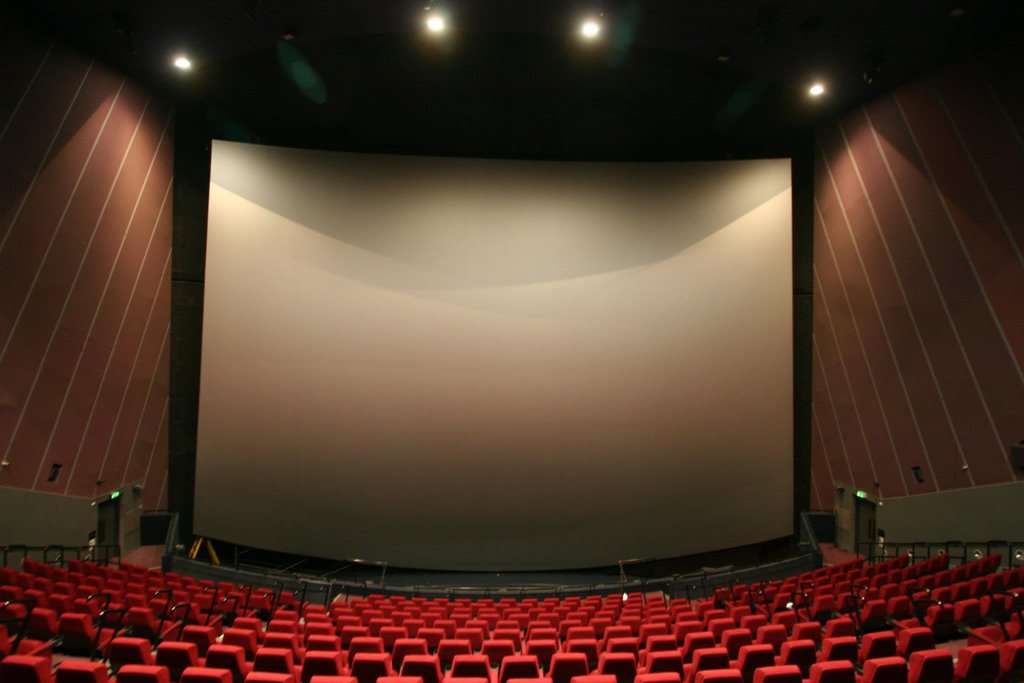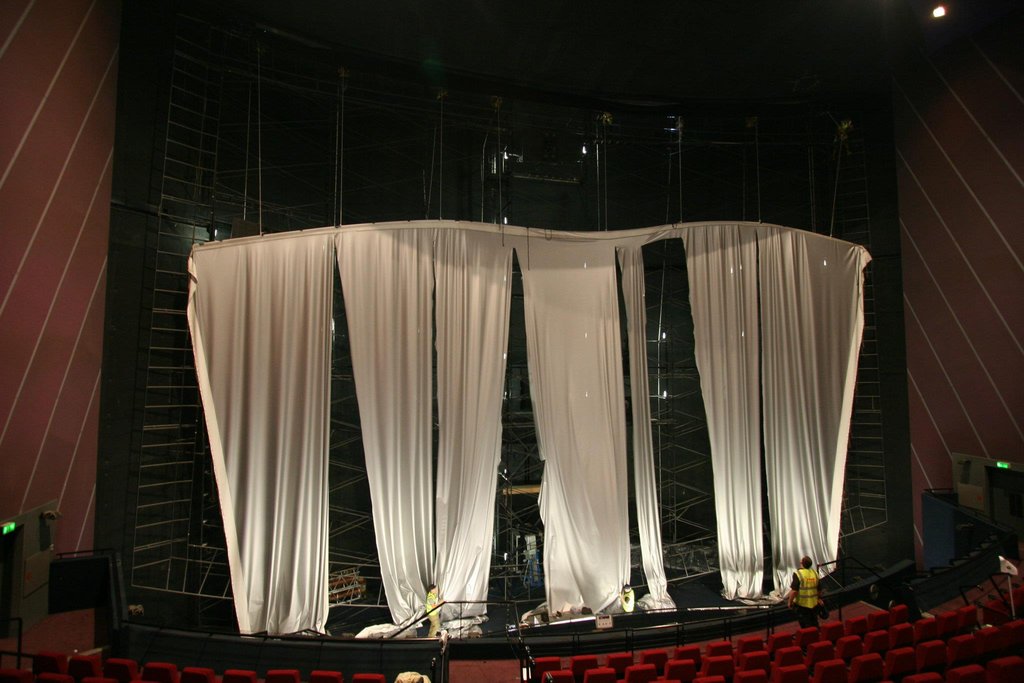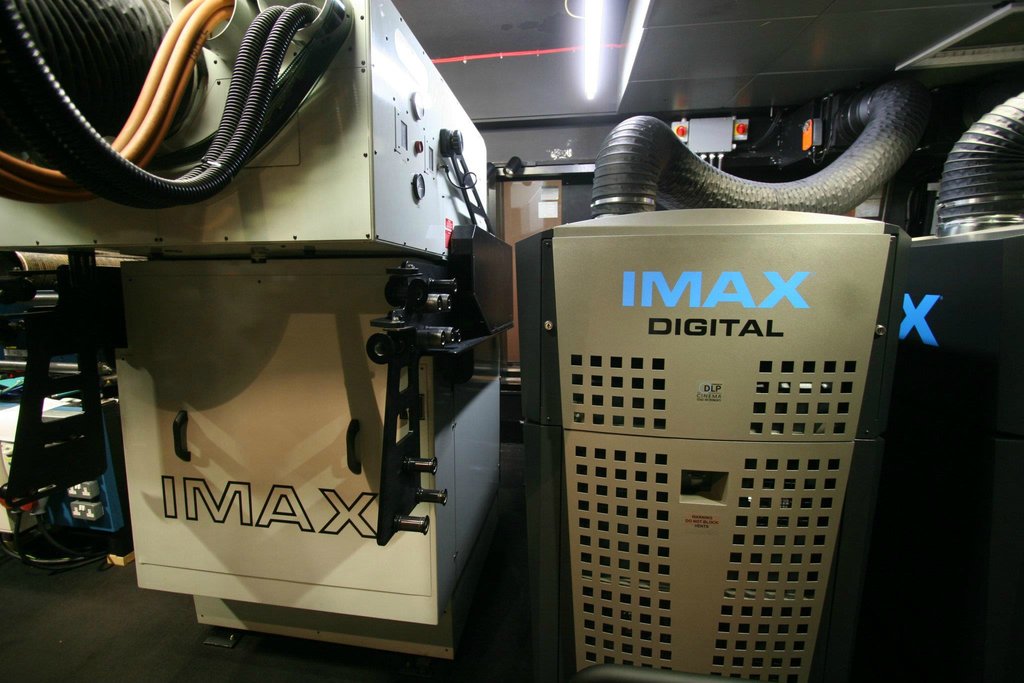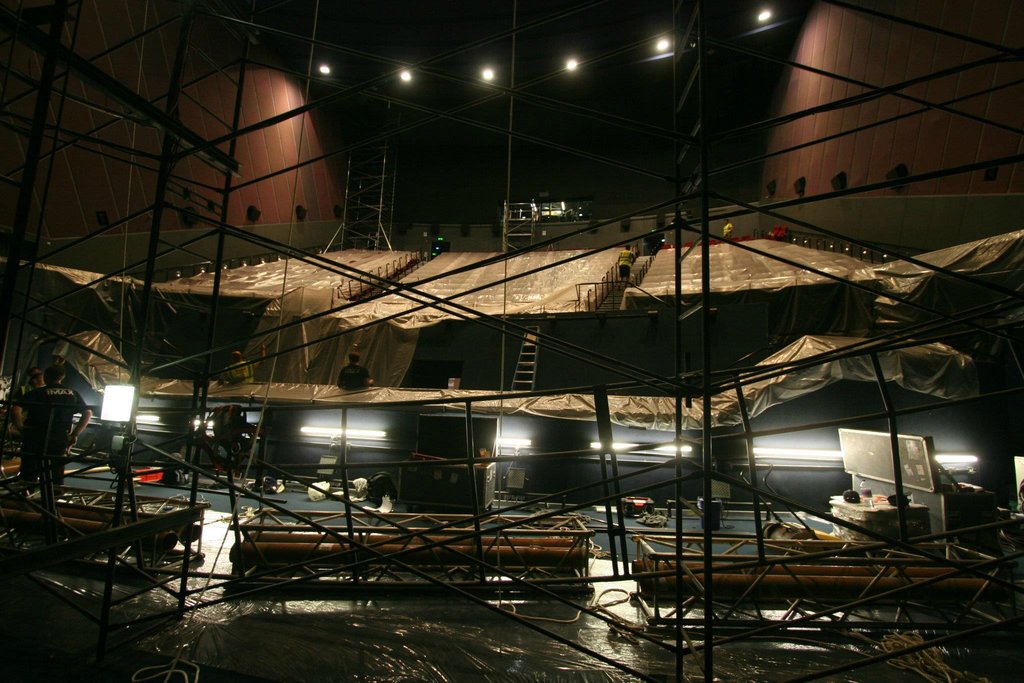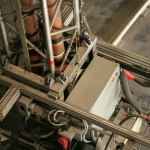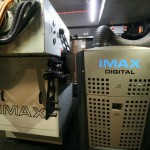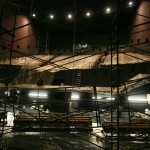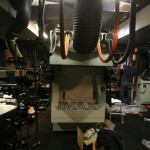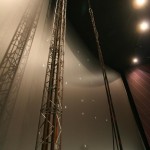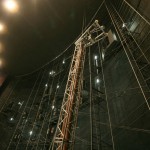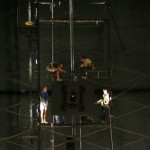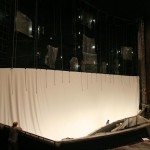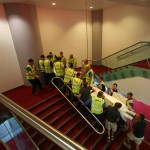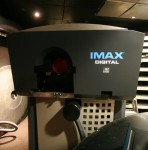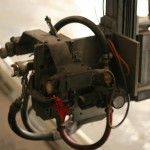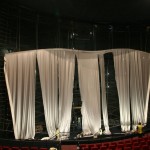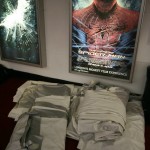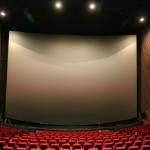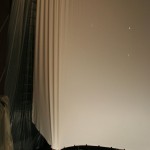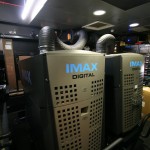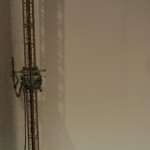What you see above is London’s British Film Institute IMAX Auditorium, after its lengthy conversion from traditional 70mm IMAX film projection to a digital system (kinda). It does not altogether look much different than it did before, but now it sports a perforated vinyl screen with a coating of silver gloss (reduces 3D ghosting and enhances brightness) as well as an IMAX digital projection system, which is still laughably based around the layering of two 2k Christie projectors.
Some of you might have preferred I included the word “rape” in the headline rather than “upgrade,” as this would obviously represent the loss of one more 70mm IMAX theater, which are disappearing quicker than Mark Wahlberg’s bees. I’d be inclined to agree as while I’m all about digital projection when it comes to standard theaters — I’ll take a 4k showing over 35mm for a contemporary film any day, every day — in the case of digital IMAX we’re talking about a system built around quickly aging pieces of projection technology that are self-evidently shittier than the alternative. 2k digital projection (even dual-layered for brightness on the bigger screens) doesn’t even come within a mile of the resolution of a 70mm film print, each frame vacuum sealed and projected with a 12,000 watt bulb. Fortunately the BFI is installing the 3D-capable digital IMAX projector alongside its 70mm projector, so that they can play films available only as IMAX DRM prints, while still rolling 70mm prints for everything available.
Lucky Brits. Fuck me, I wish they’d done that in Atlanta (apparently they did, and just crapped out on showing the TDKR prologue last year!). Of course, if you have any question why a theater would choose to fully convert to digital and leave behind the superior (and let’s say it: “real”) version of IMAX, just watch this video about what goes into preparing a 70mm theater for a 2 hour and 45 minute film like The Dark Knight Rises. If you’re wondering whether your local IMAX theater is still 70mm capable or not, check out this list and look for a “1570” code beside your theater. If you’re curious about TDKR specifically, here’s the list of theaters that will be showing Batman specifically in IMAX 70mm.
So rest assured that this photoset is not making you witness to a rape, but is merely a cool bit of exhibitor behind-the-scenes. Take a look through the gallery below, selected from this imgur page (where it has the process laid out step-by-step). The full explanation of the process is below as well.
The new IMAX screen is made in Canada and will be shipped in a crate to the BFI. Once unpacked it will then take a team of ten strong riggers to haul the 800kg of perforated vinyl up the full 20 metres height of the screen under the supervision of an IMAX engineer. Once secured at the top of the frame, the new screen will then be laced to the frame and pulled tight.
It takes 48 hours for all the creases to drop out of the new white screen. During this time a purpose-built spray rig will be installed. Tracks are laid at the base and at the top of the screen frame, and a spray rig tower is assembled and fitted to the two tracks. The rig can move left and right so that the spray gun can cover all of the screen. A laser control ensures that the spray gun is always an exact distance away as it makes its way up and down the screen, spraying a special silver paint that will ensure that light is reflected in straight lines off the screen. It is silver because a white screen would refract the light and this would cause ghosting of the image.
During these two weeks, we are also installing an IMAX 3D Digital projector alongside the IMAX film-based 3D projector, so that the BFI IMAX will have the option to present all IMAX DMR films from July 2012. Our policy will be to show 70mm film prints whenever available until IMAX unveil their brand new laser-based projection system that can fully take the place of 15/70 film.
- The two systems co-existing. For now…
via Tom Townend’s twitter (DP of Attack The Block)
